HPE ProLiant DL380T Gen10 Teardown Continued
Behind the backplane, and inside the cables we just showed is a fan partition. We can see that the AVC fans are Made in China.
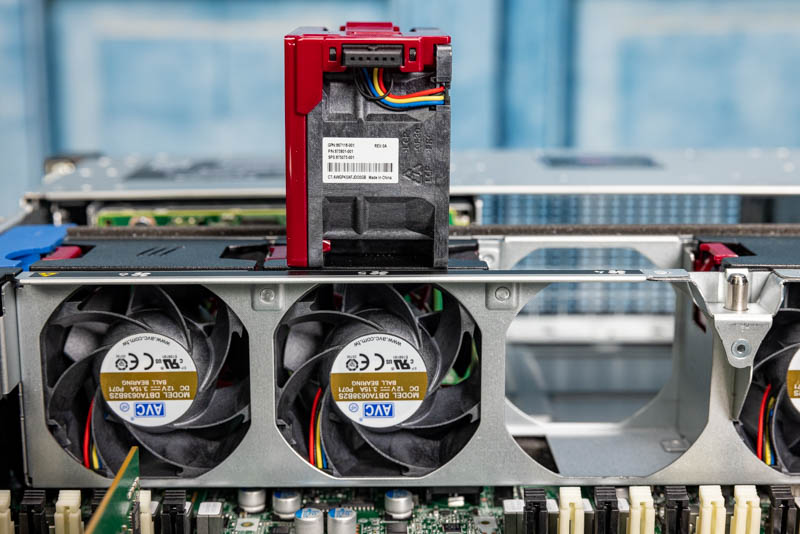
The partition itself has a great mechanism to be quickly removed. This partition or fan cage is also Made in China.
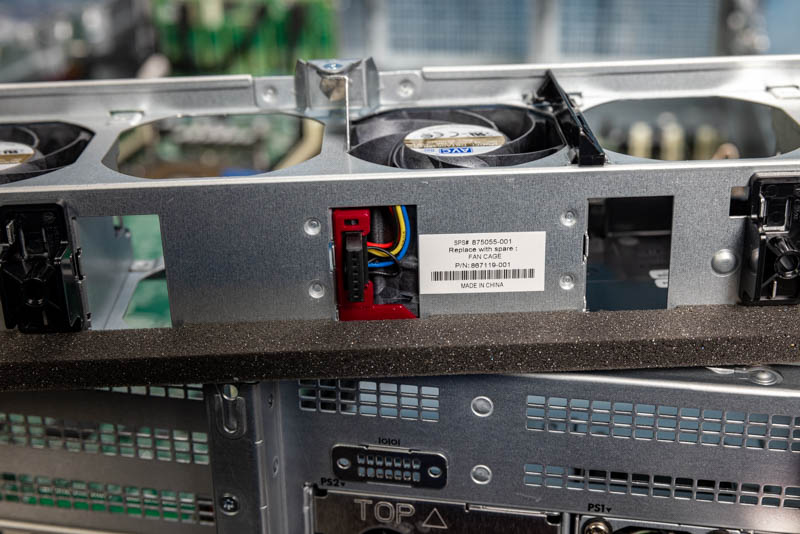
The fans push air through an air baffle system to direct air over the CPU heatsinks and to the correct portions of the chassis. This air baffle system is Made in China.
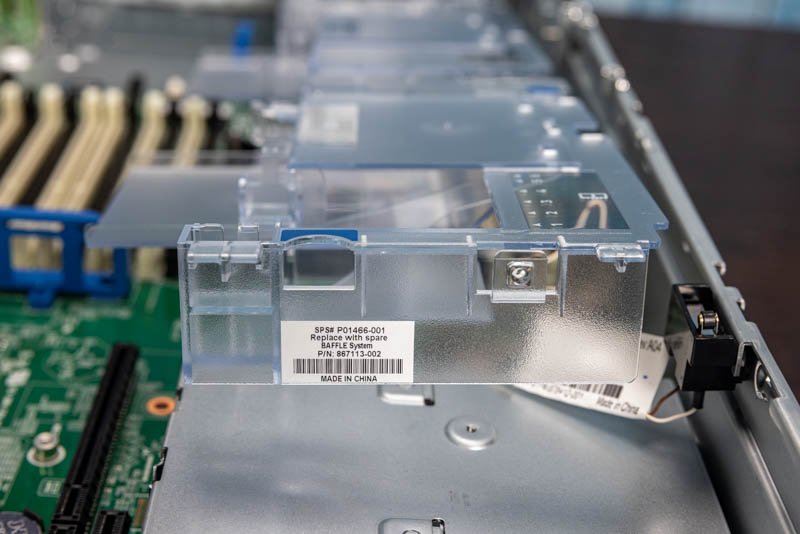
On the subject of those CPU heatsinks, those are also Made in China.
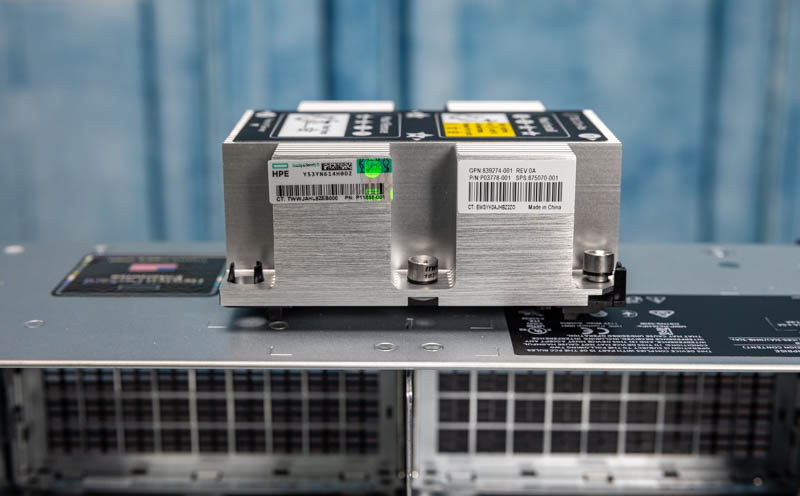
The Intel Xeon Bronze 3204 CPU does not have a country of origin stamped. We checked our review of the same chip from 2019 and that chip did not have it either.
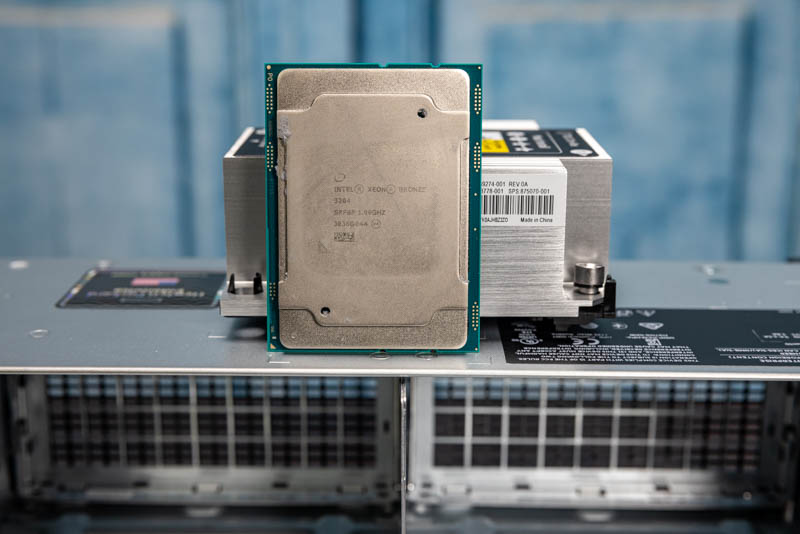
Next to the CPU is the DRAM. Here we have an 8GB Samsung DDR4-2933 DIMM. This is Made in (South) Korea.
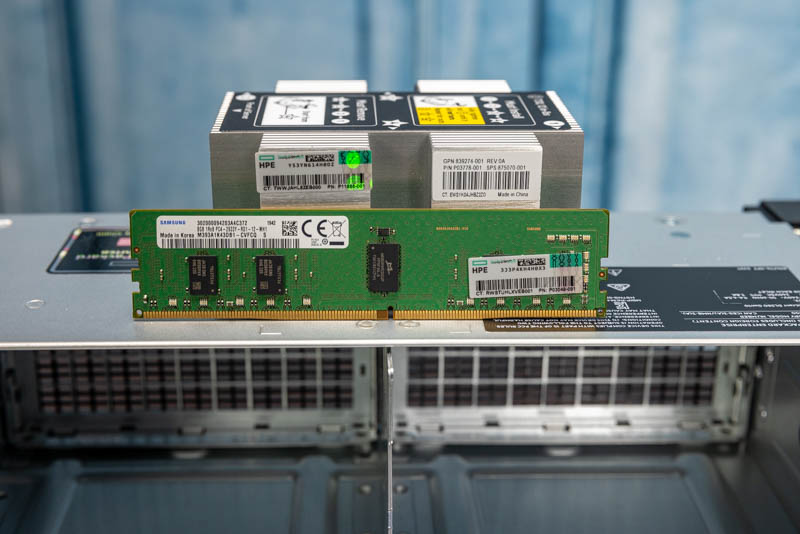
The motherboard has two labels. The first next to the dual internal USB 3.0 Type-A connectors and the PSU receptacles says Product of China.
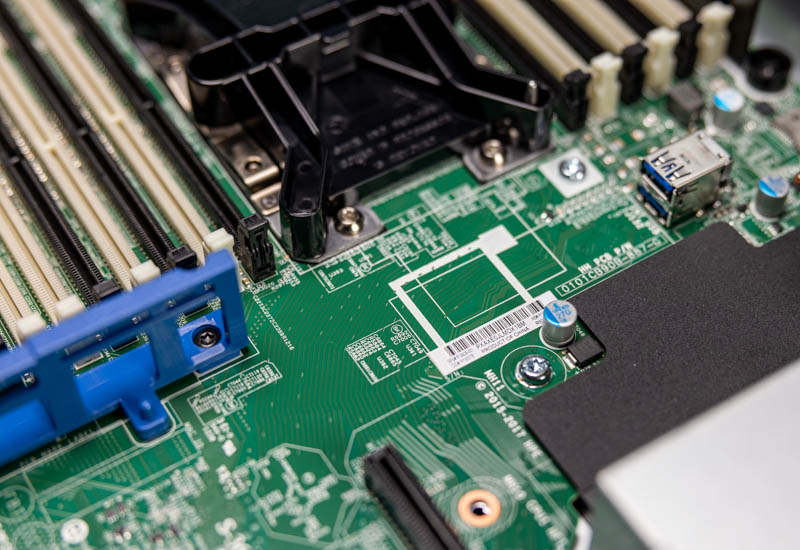
The second printed on the motherboard itself says Product of China as well.
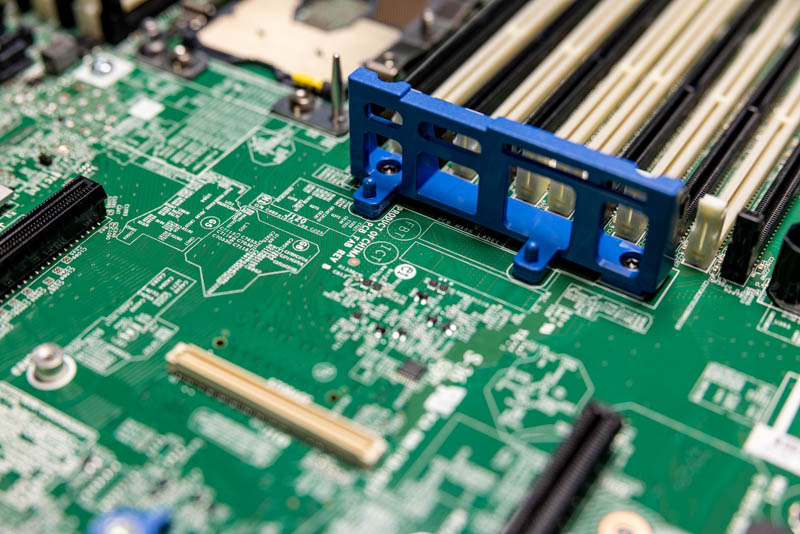
When we look at the riser, we only had one installed. Still, we see a similar label and PCB print that both say Product of China.
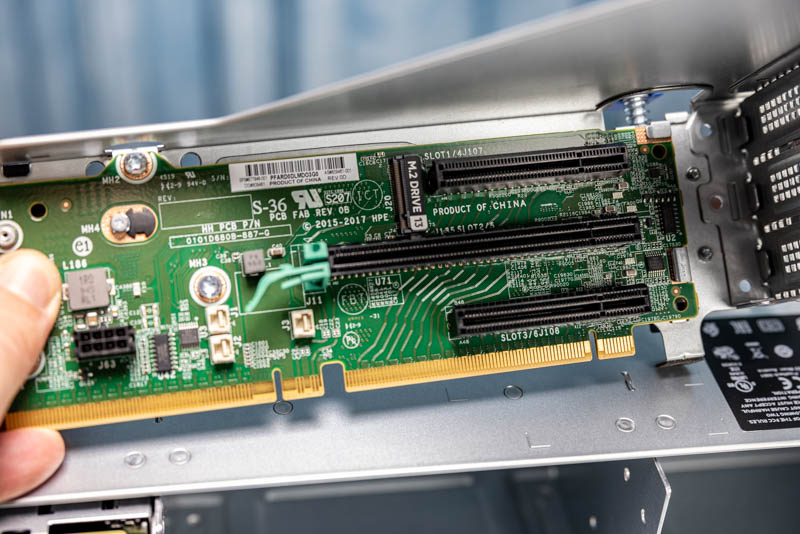
The rear of the riser has a second M.2 drive slot, and also a sticker that says “Made in China.”
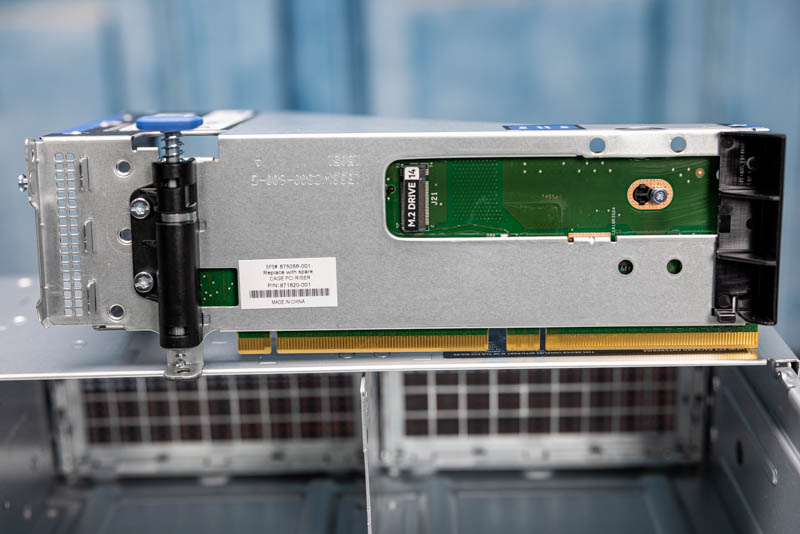
As a quick note, these risers are absolutely great with dual M.2 drive slots and three PCIe slots. From a design perspective, great job HPE here. One small item we wish would be changed is that they change to completely tool-less designs such as with the M.2 drive standoffs.
Under the PCIe riser, we have a HPE FlexLOM slot. We use a lot of FlexLOM modules at STH in our lab servers. This particular card is a Cavium, now Marvell-based 10/25GbE adapter. It is labeled made in Malaysia.
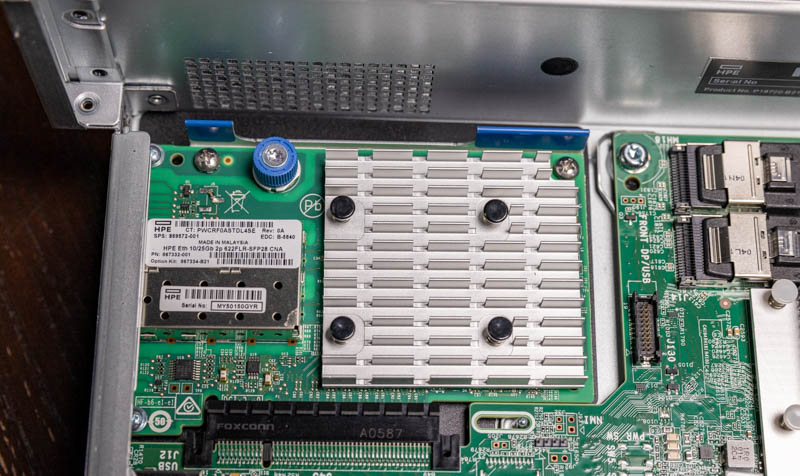
Something we wanted to quickly point out is that in the next-gen PCIe Gen4 systems, these risers are largely being replaced by OCP NIC 3.0 slots. You can see here how, although it is easy to service, it requires removing the riser above due to the slot orientation being perpendicular to the rear of the chassis. OCP NIC 3.0 slots allow one to pull NICs through the rear of the chassis.
On the motherboard itself, we see something interesting. Like the HPE ProLiant DL325 Gen10’s mid-cycle change, we do not see the quad 1GbE NICs populated. We are not entirely sure why HPE made this change, but there is a common rumor that Broadcom got designed-in and then greatly increased prices so HPE took a stance against that practice.
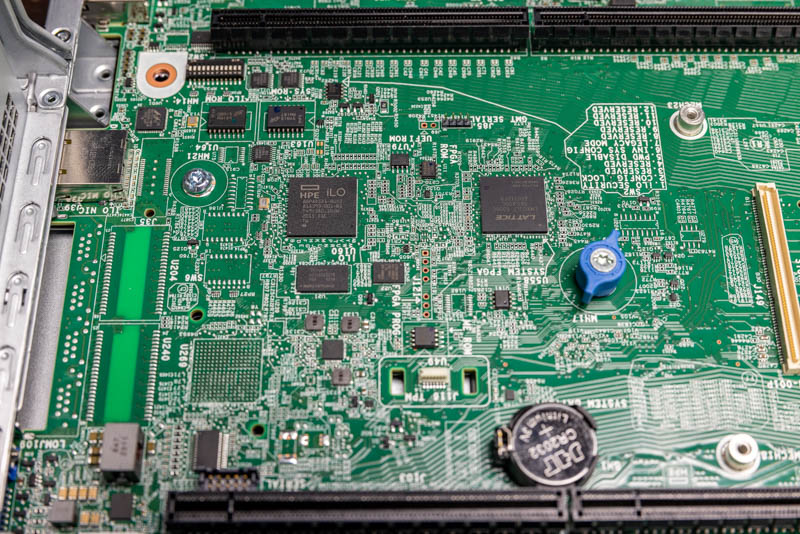
We just wanted to show some of the chips here. We can see the iLO controller and Marvell chip with “TW” likely for Taiwan. The SK hynix DRAM chip for the iLO controller does not have a country clearly marked. We can also see a Lattice FPGA that is marked Malaysia. Although FPGAs are making waves today for networking, AI, and other areas, in servers like this, they are also used for sensors and making lights blink. If you have a server, you likely have a FPGA in your server even if you do not see one in your PCIe slots.
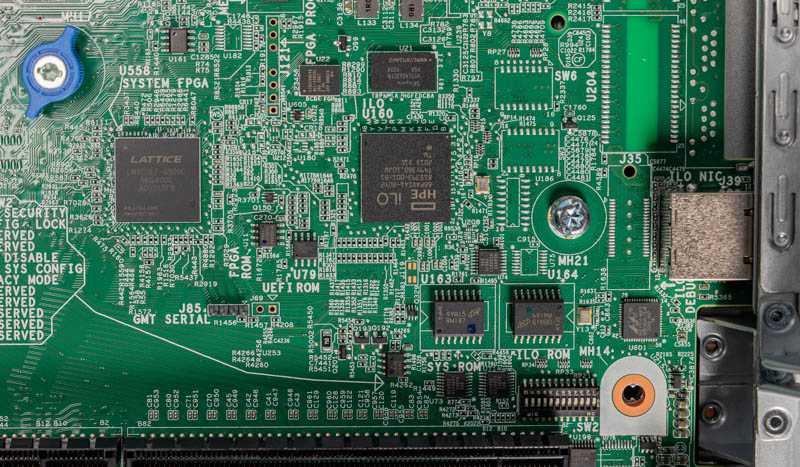
The power supply is a nice 800W 80Plus Platinum unit. This is a PSU that can go from 100-240V which is important since the US has a lot of 110/120V power and some HPE PSUs did not go that low. It is marked Made in China(DCGP).
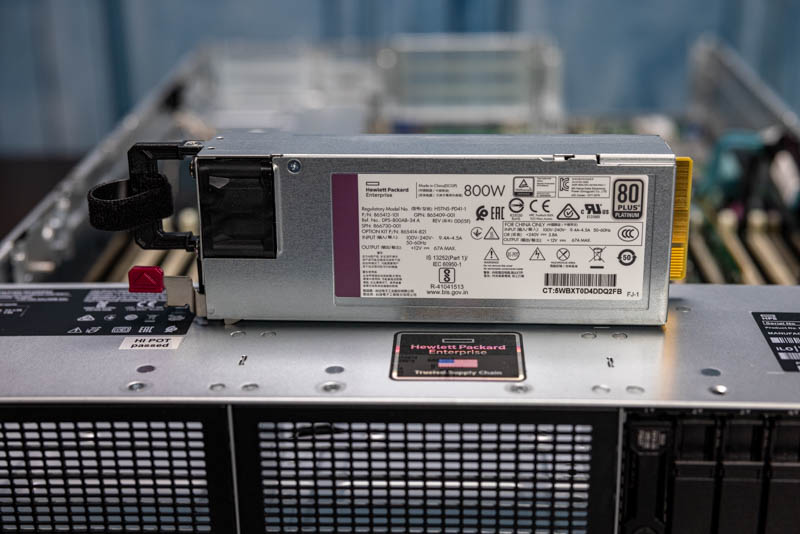
Overall, it seems like these are fairly standard ProLiant components. Most electronics manufacturing is in Asia and that is what we see represented in the individual parts before transforming into a complete server.
Next, we are going to discuss some of the other items we saw in this teardown, and give our final thoughts.




I don’t care about the metal and plastic. I do care about the drives, memory, processors, chips, PCBs, and other electronic parts like wires and fans. You went too far in the teardown.
Well this is very nice and all but let us have a conversation about BGP highjacking if we are all worried about what the funny chips that the evil forners put in our servers do.
@RunsackAL, while some have nationalist concerns about the origin of their products down to the smallest details, I would agree that an article addressing “Trusted Supply Chain” could probably ignore case “metal and plastic” parts (including PCB board).
So server comes from trusted supply chain and pcb is made in China? Is that a joke or two? Or has HPE really put the pcb under microscope and verified everything to the latest detail? Can’t believe this at all…
Patrick, in negativity against HPE put into previous comment I’ve forgotten to thank you for this wonderful article. That’s something I’ve been diging into recent months and it’s indeed highly complex task to get some meaning full information about the components country of origin from the hardware vendors. Servers are in the first battle line so I would expect way better job performed by HPE here, but the hell I got with notebooks is unbelievable too. Vendors freely claim that their notebooks are assembled in U.S.A. while it’s clear that this is ODM work done somewhere in China or in the best case in Taiwan etc. etc.
It’s really hard to source some components which has not been on mainland China…
I’d really appreciate if you would just enhance your future articles by single line or two mentioning also component/system country of origin. Would help a lot here. Thanks for all your great work!
Wowza. Thank you for doing this. This is a great level of detail.
US-made is the opposite of trust.
Looks like assembled in the US with some papers printed in the US. Once assembled, all transport is domestic which makes supply chain interruptions harder. Over time I wonder if they will start utilizing more North American supply sources for more of the platforms.
See the FTC website: https://www.ftc.gov/tips-advice/business-center/guidance/complying-made-usa-standard#Assembled%20in%20U.S.A.
Assembled in the USA.
I’m not going to pick on anywhere in this comment, but I wouldn’t want to pay extra for this configuration; I’d prefer to source my own motherboard.
Trusted Supply China